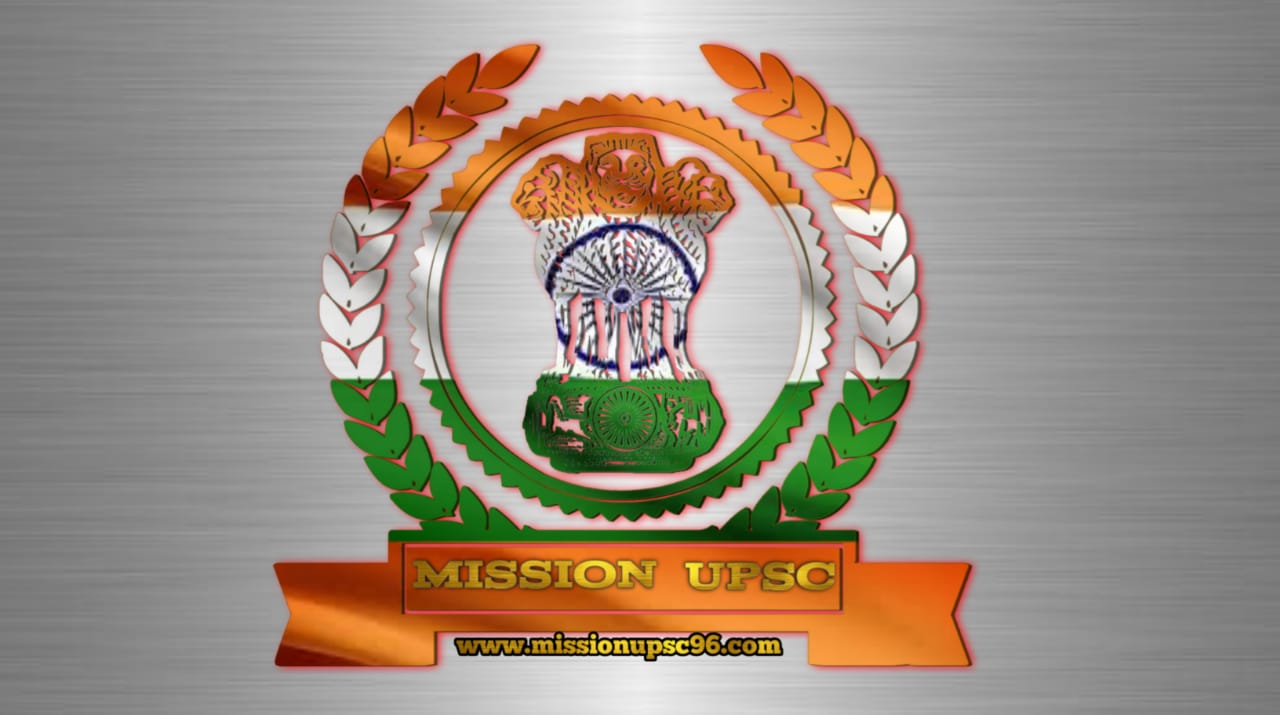Hey guys welcome to 'missionupsc96.com'! today we will discuss about federal water governance.
It
talks about the need for a systematic federal response where the Centre and the
states can work together to deal with the looming water crisis.
this article is important all IAS, civivil service exam and state PCS exam.
Download Pdf :- Download
Mains question :-
Good water governance needs systematic federal response where the Centre and the states need to work in a partnership model. Discuss
Federal
Water Governance
Recently, two bills related to water governance were passed by the Lok Sabha viz. the Interstate River Water Disputes Amendment Bill 2019 and the Dam Safety Bill 2019. These bills seek to deal with the emerging challenges of inter-state water governance in India.
The Interstate River Water Disputes Amendment Bill 2019 seeks to improve the inter-state water disputes resolution by setting up a permanent tribunal supported by a deliberative mechanism the dispute resolution committee.
The Dam Safety Bill 2019 aims to deal with the risks of India’s ageing dams, with the help of a comprehensive federal institutional framework comprising committees and authorities for dam safety at national and state levels.
However, the agenda of future federal water governance is not limited to these issues alone. These include emerging concerns of long-term national water security and sustainability, the risks of climate change, and the growing environmental challenges, including river pollution.
Therefore, these challenges need systematic federal response where the Centre and the states need to work in a partnership model.
Challenges in Water Governance
Federal Issue: Water governance in India is
perceived and practised as the states’ exclusive domain. However, their powers are subject to
those of the Union under Entry 56 about inter-state river water governance.
· Combined with the states’ dominant executive power, these
conditions create challenges for federal water governance.
· Further, the River Boards Act 1956 legislated
under Entry 56. However, till this date, no river board was ever created under
the law.
Water Knows No political Boundaries: Owing to different jurisdiction and control of states, the interconnectedness of surface and groundwater systems resulted in fragmented surface and groundwater policies.
· Also, due to this, data availability in India is currently
fragmented, scattered across multiple agencies, and inadequate for sound
decision-making.
· Moreover, data gaps exist on the interconnectivity of
rainwater, surface water, and groundwater, land use, environmental flows,
ecosystems, socio-economic parameters, and demographics at the watershed level.
Need For Cooperative Federalism
Looming Water Crisis: A NITI Aayog report held that 21
major cities are expected to run out of groundwater as soon as 2020 which may
affect nearly 100 million people.
· Moreover, the 2030 Water Resources Group projects a 50%
gap between water demand and water supply in India by 2030.
· Therefore, in order to address the over-abstraction and
overuse of water in multiple geographies, there is a need for the concerted
effort of centre and state governments.
Pursuing National
Projects: Greater centre-states coordination is also crucial for pursuing
the current national projects like Ganga river rejuvenation or inland navigation
or inter-basin transfers.
Also, the latest centrally
sponsored scheme (CSS), Jal
Jeevan Mission (JJM), envisages achieving universal
access to safe and secure drinking water in rural areas,
which otherwise is a domain of the states.
Way Forward
Centre-States Dialogue: The Centre can work with the states
in building a credible institutional architecture for gathering data and
producing knowledge about water resources.
· In this context, JJM presents an opportunity to get states
on board for a dialogue towards stronger Centre-states coordination and federal
water governance ecosystem.
· The dialogue can consider the long-recommended idea of
distributing responsibilities and partnership-building between the Centre and
states, like centre can build a credible institutional architecture for
gathering data and states can improve the delivery of this essential service to
its populations.
Multi-Stakeholder Approach: In view of multiple stakeholders ( farmers, urban communities, industry and government) influencing and affected by water flows, and governance framework should strive to achieve joint decision-making.
In this context, the
establishment of stakeholder councils can help to a large extent.
Implementing Mihir Shah Committee Recommendations: There is a need to carry out some essential reforms as recommended by Mihir Shah committee. For example, Merging Central Water Commission and the Central Ground Water Board into one National Water Commission which would cover both groundwater and surface water issues.
Conclusion
Water
governance is widely acknowledged as an important factor for sustainable development.
Thus, a concerted effort of all stakeholders is required for resolving
conflicts and developing a shared vision for the use of water resources to
support economic growth, social development and environmental protection.









1 Comments
Nice
ReplyDeleteIf you any question then ask me in comment section